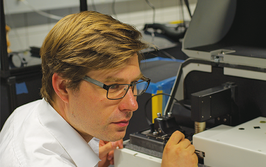Quantitation of residual solvents and terpenes in cannabis products – a combined approach
This study describes a combined approach for fast, targeted screening of residual solvents and key terpenes, as well as a discovery route for enhanced separation of terpenes and terpenoids and greater insight into cannabis aroma.

contributed by SepSolve Analytical |
Introduction
Laboratories seeking to maximise productivity in the analysis of cannabis products face numerous challenges due to sample diversity and complexity, as well as the vast array of testing requirements.
One such example is the analysis of residual solvents – chemicals used in the manufacturing process (e.g. of cannabis concentrates) that may remain in the final product. These solvents can be harmful to consumers, making it an important aspect of cannabis testing and the subject of new regulations. In fact, in the state of California, it is now a legal requirement for cannabis products to undergo residual solvent testing,[1] to ensure products do not exceed the defined action levels.
Log in or register to read this article in full and gain access to The Analytical Scientist’s entire content archive. It’s FREE!

















